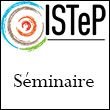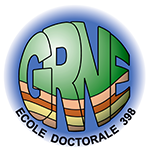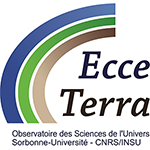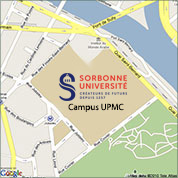Webinaire ISTeP - Jorge Jara

(ENS)
Why, Where and how earthquake ruptures become supershear: a multidisciplinary approach
Most earthquake ruptures propagate at speeds below the shear wave velocity within the crust, but in some rare cases, ruptures reach supershear speeds. The physics underlying the transition of natural subshear earthquakes to supershear ones is currently not fully understood. Most observational studies of supershear earthquakes have focused on determining which fault segments sustain fully-grown supershear ruptures. Experimentally cross-validated numerical models have identified some of the key ingredients required to trigger a transition to supershear speed. However, the conditions for such a transition in nature are still unclear, including the precise location of this transition. In this work, we provide theoretical and numerical insights to identify the precise location of such a transition in nature. We use fracture mechanics arguments with multiple numerical models to identify the signature of supershear transition in coseismic off- fault damage. We then cross-validate this signature with high-resolution observations of fault zone width and early aftershock distributions. We confirm that the location of the transition from subshear to supershear speed is characterized by a decrease in the width of the coseismic off-fault damage zone. We thus help refine the precise location of such a transition for natural supershear earthquakes.
vendredi 25 juin à 12h30
https://zoom.us/j/94531753951?pwd=L1ZYWURlL2xrNEZpNzFOSnpkT0FqZz09
Meeting ID: 945 3175 3951
Passcode: Yxuej5
Egalement dans la rubrique
- Séminaire ISTeP - Carole Berthod
- Séminaire ISTeP - Razvan Poppa
- Webinaire ISTeP - Yann Klinger
- Webinaire ISTeP - Sylvain Garel
- Webinaire ISTeP - Vincent Roche
- Webinaire ISTeP - Cécile Arenes
- Séminaire ISTeP - Samuel Angiboust
- Séminaire ISTeP - Sarah Incel
- Séminaire ISTeP - Romain Rubi
- Séminaire ISTeP - Jean-Paul Callot
- Séminaire ISTeP - Sabine Den Hartog
- Séminaire ISTeP - Thibault Cavailhes
Chiffres clés
L'ISTeP comprend 108 membres dont :
- 12 professeurs
- 21 maîtres de conférences
- 2 directeurs de recherche CNRS
- 2 chargés de recherche CNRS
- 7 ATER et post-docs
- 26 doctorants
- 21 ITA-IATSS
- 17 collaborateurs bénévoles / émérites





